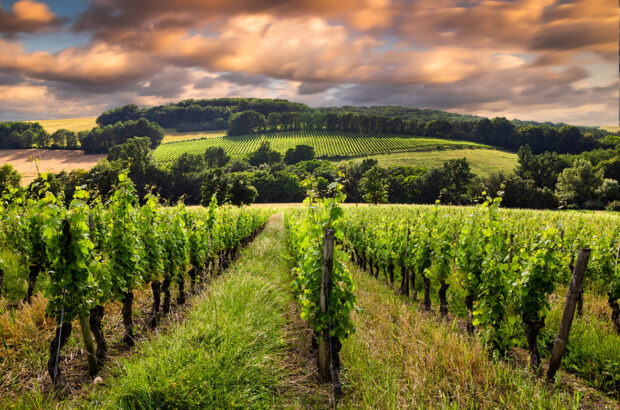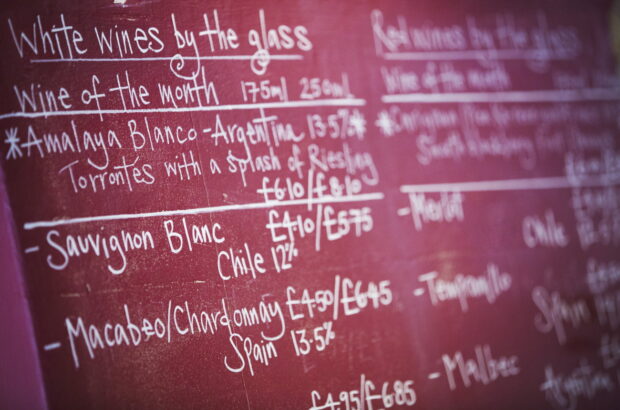Could you ever really buy a vineyard property? It’s something every wine lover has thought about, so we quizzed brokers from Provence to California about some of the key market dynamics and what is available.
Bordeaux’s ‘hobby vineyards’
Eagle-eyed entrepreneurs in Bordeaux have seen opportunities to renovate properties with a view to meeting demand for so-called ‘hobby vineyards’, says estate agency VineyardsBordeaux. It’s a loose term, but a hobby vineyard owner probably doesn’t need to make a profit from the grapes or the wine, says Michael Baynes, executive partner and co-founder of Vineyards-Bordeaux, which is affiliated to Christie’s International Real Estate.
It might not even be the buyer’s primary residence. And the house will likely constitute more than 50% of the transaction value, according to a broad definition outlined by the Christie’s ‘Masters Circle’ of global property specialists. Properties like this are generally going to include a few hectares of vines and a well-presented residence, whether it’s a small house or a full-on château building.
In Bordeaux, Baynes says hobby vineyard buyers are often willing to spend more for a ‘turnkey’ estate. Essentially, you can turn up with your toothbrush rather than having to worry about potentially expensive renovations before taking up residence.
He says the sweet spot for this kind of estate is in the region of €3.5m to €4m (£3m-£3.4m), although prices do naturally vary. Bordeaux’s Right Bank and Entre-deux-Mers throw up the most opportunities. St-Emilion is unsurprisingly a ‘hotbed’ in terms of demand, but the Côtes de Bordeaux appellation in general is an interesting area to look at, according to Baynes.
Buyers include ‘people from all walks of life’, he says. Profiles include ‘wine enthusiasts who recognise that they love wine but don’t know how to make it’, and who ‘might have done WSET [qualifications]’
Or it might be ‘somebody who loves the wine lifestyle’ but only wants to stay at the estate a few weeks per year, perhaps for meetings or entertaining. Baynes recalls selling a property to a NATO diplomat ‘who needed to be in the Europe arena’ for military and political meetings.
Some people want to get really geeky about the wine side, and don’t mind spending serious money to create their boutique brand. ‘We had a Goldman Sachs director who absolutely fell in love with the vineyards and the wine,’ recounts Baynes. ‘He just wanted a really outstanding winery, and he didn’t mind if it wasn’t commercially profitable.’
Other buyers are seeking a whole lifestyle change. Several estate agents speak of people reassessing lifestyles in light of the Covid-19 crisis – often looking to move out of cities.

A view across the vines…Photo credit: Christie’s International Real Estate / Michaël Zingraf.
Opportunities: from Tuscany to Provence
Provence is an example of a ‘booming’ vineyard market, says Adam Dakin, director of the Wine Objectives agency – he covers most of southern France from Languedoc to Côte-Rôtie and St-Tropez. Rosé’s popularity has helped. Recent notable deals include businessman Stéphane Courbit joining with Bordeaux’s Prats family to buy Château d’Estoublon, and Château Cos d’Estournel owner Michel Reybier purchasing Château La Mascaronne.
Prices can vary significantly, however. Speaking purely about the vineyard land, Dakin says the northern Var region (Provence) averages about €80,000 (£69,000) per hectare. But it’s €150,000 (£130,000) per hectare nearer the coast – and the glamour of the Côte d’Azur.
Across the Italian border, Tuscany’s rolling hills, vineyards and olive groves make for another top destination. Gemma Bruce, MD and co-founder of Italian property specialist Casa & Country, says there are a mix of lifestyle estates with vines and more commercial wine properties. You could get a residence with a hectare of vines and some olive groves for about €1.5m (£1.3m). But prices stretch up to several times that figure, too. ‘The more developed and well maintained it is, prices go up quickly,’ says Bruce.
‘We are working with a couple of groups of investors,’ she says. Whether it’s friends or colleagues who share a passion for wine, one option is to buy a place that’s been used for holiday rentals, and then everyone can have their own apartment. ‘A lot of properties [coming up for sale] have been owned by the same family for a long time,’ Bruce adds. These often need work, however. Vines might need to be replanted or winery equipment upgraded, for example
Could you buy a Brunello di Montalcino DOCG vineyard? ‘They don’t come up very often,’ admits Bruce. In several vineyard regions, highly prized plots or estates might not even be publicly listed for sale. Montalcino, Chianti and Montepulciano have an understandable pull for buyers, particularly for anyone looking to sell wine. It depends on a buyer’s needs, but Bruce adds you might also get ‘more for your money’ away from those key areas.
Location naturally affects prices. Over in the US, in northern California, Kevin McDonald, of Kevin M Properties and Sotheby’s International Realty, says a nice estate property with a hectare or more in Sonoma County could be about $3m or more.
Prices start at closer to $1.5m further north in Mendocino County. In Napa, a similar property could be up at $6m-$7m. McDonald says there are definitely luxurious lifestyle estates available in northern California ranging from, say, 2ha-8ha. Yet it’s important to pay attention to grape contracts and the supply situation if you’re hoping to commercialise the property.
Buying a vineyard on a tighter budget?
There might not be a moat, infinity pool or helipad – for now – but there are ways to get into the vineyard world without spending millions. One is to just buy the vines. Dakin highlights a 10ha vineyard in Terrasses du Larzac, Languedoc, listed for €300,000.
French land agency Safer said last year that AP vineyards in France (excluding Champagne) cost an average €74,900/ha in 2019. Many areas were well below this, with averages of €20,000 in Ventoux, southern Rhône; €16,000 in Faugères, Languedoc; and €12,000 in Muscadet Sèvre-et-Maine, Loire.
Dakin adds that beginning a négociant-style operation without a vineyard is another way of dipping into the wine scene. ‘You can start a business on a shoestring, but if you want to make it from your own vineyards then you’ve got to have capital and be prepared to wait a few years.’
There are several ways to run the winemaking. If it’s a hobby vineyard that’s just for fun, then having a go yourself could be part of the experience. On a more commercial level – even if you don’t expect a profit – you might outsource the process to a local cooperative and buy some wine back under your own label.
Other options range from fully employing staff, contracting out vineyard work or recruiting winemaking specialists to help. However you go about it, running a vineyard can be hard work. That said, Decanter has previously featured wine lovers who have successfully made the leap. It’s great to dream, but take the plunge in the cold light of day.
And a few vineyard properties to inspire you:
Luxury Aix-en-Provence vineyard estate for sale
Provence mansion with vineyard land listed for €1.8m
Luxury Sonoma vineyard estate listed for $10.9m
Piedmont wine property for sale at €1,850,000
English Pinot Noir vineyard listed for sale
Buying a vineyard: The nuts and bolts to keep in mind
Legislation and procedures vary from area to area, even within the same country, and estate agencies and local brokers can often provide help in this regard. Here are a few important aspects to consider, especially from a commercial point of view.
What’s your strategy?
Is this just for fun? Do you want to make wine commercially? Do you even like Provence rosé? If you want to distribute wines directly, it could be time to look up that sommelier you once met. Adam Dakin of Wine Objectives adds: ‘What is the market you’re going to be aiming at?’ Check licensing laws, too.
Do you homework
Make time for due diligence. ‘Do the right homework at the outset,’ says Casa & Country’s Gemma Bruce. This might include estimated running costs or a vineyard health check. If you want to sell grapes, is there a contract already in place? Are the vines fit for your intended purpose? In northern California, it might cost $25,000-$50,000 per acre (0.4ha) to replant, says Kevin McDonald of Kevin M Properties.
Planting and rights
Vine planting is regulated in the EU. ‘Don’t presume you can plant vines without having the rights,’ says Bruce, adding that it is sometimes possible to get state funding to replant older vineyards in Italy. EU rules have been relaxed slightly in recent years. ‘That’s why you’re starting to see people planting outside Paris,’ says Dakin. Yet it can take several years for newly planted vines to translate into wine.
Get specialist advice
From a trusted broker and specialist lawyer to a viticulture or environmental consultant, seek expert help. Even the best do this; the founders of Languedoc’s nowfamous Mas de Daumas Gassac, Aimé Guibert and his wife Véronique planted Cabernet Sauvignon on the advice of geologist Professor Henri Enjalbert in the early 1970s.
Check your insurance
If it’s potentially a commercial grape-growing operation, ‘a lot of lenders will want to see crop insurance in place’, says McDonald. This advice seems particularly pertinent in the context of extreme weather patterns related to climate change.
Stock take
Check if existing wine stocks are included in the listing price or not. ‘Negotiating [existing] stock is always difficult,’ says Dakin.







